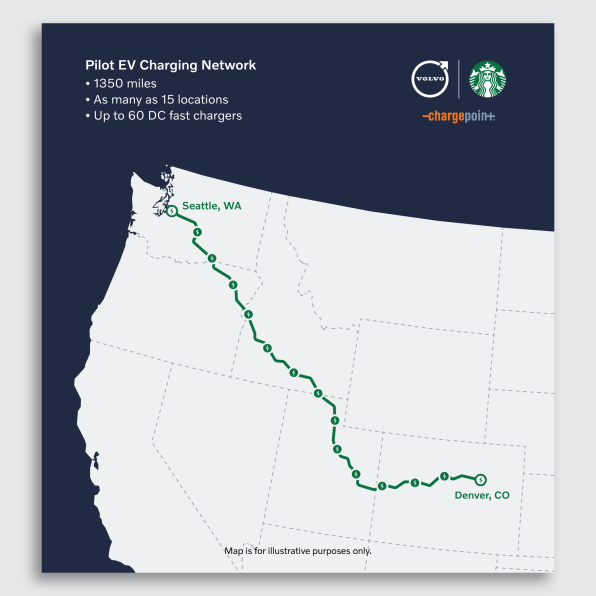Rebuilding Social Stamina
Tippets #171: Gathering after COVID, how people think, Starbucks charging, and more. Enjoy!
A warm welcome to you new readers who are getting this for the first time. Thank you for letting me be a small part of your week. As a reminder, Tippets is where I share my thoughts on topics I find interesting, usually centered around technology and psychology, as well as an assortment of tidbits and snippets (aka. tippets!) from to mix it up!
This past weekend I found myself in a situation I hadn't experienced in years: in a room full of people I didn't know.
This unsettling moment took place in the dry heat of Scottsdale, AZ, where I was attending a conference hosted by an investor in my venture firm. As I arrived at the first of many scheduled activities that would take place over the multi-day event, I looked out at the group patiently milling about outside the Starbucks that was serving as the meeting point. A diverse group of about thirty people aged 25 - 65 stood before me, dressed in athletic gear, ready for a morning hike on the Quartz Ridge Trail. As far as I could tell, there was one thing I had in common with everyone in the group: I didn't know a single person.
Damn…how do we do this again?
I am a naturally extroverted human being. I feed off the energy of others. I thoroughly enjoy meeting new people and building new bridges. So, it was strange to feel a sense of apprehension in a social setting - what used to be my comfort zone. But, upon further reflection, it makes sense why.
Like most people, I have spent the better part of the last two years almost exclusively with a close group of family and friends. People I have known for years, with a deep understanding of their quirks, personalities, and histories. And while my job as a VC is very much about meeting new people, most conversations with new individuals have mainly been in small groups and have, over the last twenty-four months, predominantly been over Zoom. In the early days of the pandemic, it was a steep learning curve to grow accustomed to video conferencing etiquette and engagement ("No, you go ahead", "Can you hear me?"). But I am now totally comfortable in that setting. Unfortunately, my IRL interaction skills, with physical energies colliding in the real world, taking cues from body language and facial expressions, are understandably blunt.
Half of me was excited to walk up and engage with this group of strangers, a significant milestone on the path back to normalcy. The other half? Exhausted at the idea of meeting this many new people.
It's like when you get back in the gym after taking one too many weeks months off. Ideally, you'd ease back into the swing of things with a casual mile or two on the treadmill at a reasonable speed, followed by some light stretching. After all, the extra ten pounds hanging off your gut, courtesy of eating your toddler's cold quesadillas off the floor over the last eight weeks, have taken their toll. But instead of a slow re-introduction to the gym, the trainer you've hired launches you straight into wind sprints followed by a heavy push/pull sequence. You end up hands on knees wondering how it's only been 14 minutes since you started, when before you used to relish this type of thing!

It takes real effort to build a meaningful connection in a short amount of time. The sensory overload from face-to-face interactions, especially not having done them in a long time, is very real. Engaging in small talk with a stranger, establishing common ground, and finding mutual interests are all muscles that require training. And, as described in a recent WSJ article appropriately titled, "There's Still a Limit to How Much In-Person Socializing Many Can Handle," at this point, these muscles are way out of shape.
As one friend of mine put it, "During COVID, you found your inner introvert."
Luckily for me, most people in the broader group felt the same way. After a few minutes of awkward standing around, the muscle memory kicked in. The stilted conversation about names, location, and occupation slowly gave way to wide-ranging discussions spanning the influence of geopolitics on tech and the best way to expose your kids to international cultures to St. Peters' magical Elite Eight run. Smiles were plentiful (and finally visible, sans masks), and laughter served as a persistent soundtrack throughout the weekend.
I went to bed physically and mentally drained both nights of the conference. And after returning home late Sunday night, I preemptively rescheduled my Monday meetings, (correctly) anticipating that I'd need some quiet "me" time to recover. But the fact that I am comfortable once again being in both a work and social setting with strangers, looking to build new connections, gives me immense hope.
I have written before about a return to normal, only to have been proven overly optimistic. That said, now more than ever, it feels like we're getting closer to whatever 'After COVID' will be. I, for one, am here for it, ready to get back into the 'gym' and build back my social stamina.
Tippets from Around the Web:
How People Think
A long, detailed piece by Morgan Housel that describe seventeen of the most common and influential ways people think. While the length can seem intimidating, I encourage a skim. As he says, “It’s a long post, but each point can be read individually. Skip the ones you don’t agree with and reread the ones you do – that itself is a common way people think.” The three I spent the most time with:
7. We are pushed toward maximizing efficiency in a way that leaves no room for error, despite room for error being the most important factor of long-term success.
8. The best story wins.
14. The gap between knowing what to do and actually getting people to do it can be enormous.
Starbucks wants to become the gas station of the future for EVs
According to a July 2021 study, there are going to be 26 million EVs on the road in the United States by 2030, up from 1.8 million by the end of 2020. Even if you discount this number based on potential long-term supply chain issues and inability for manufacturers to deliver, this is still a monumental increase. More electric vehicles will mean a need for more charging infrastructure. By the end of 2020 there were approximately 216,000 charging stations, a number that needs to grow to 2.4 million to support the increase in EVs. Starbucks, with over 15,000 locations around the US, wants to help.
In a pilot this year, the company is partnering with Volvo and Chargepoint to install EV chargers in its parking lots along a 1,350-mile route from Denver to Seattle, with stops available roughly every 100 miles.
“This is pairing the idea of electric vehicle charging with the fact that, hey, if you’re on a trip, you’re gonna stop in in the morning anyway to get your Starbucks, to get your beverage, to get your breakfast,” says Michael Kobori, chief sustainability officer at Starbucks. “And as you’re sitting there, getting ready for the day and planning out your route and checking out, your car is just charging.”
This is a great idea, and expect to see more announcements of this nature from companies with large footprints along major highways (particularly in areas marked as federal opportunity zones).
How Steve Wilhite created GIF, the graphics format that took over the world
I’ve talked before about the humble beginnings of the QR code, an almost 30-year-old technology that is now featured on boarding passes, restaurant bills, billboards, and TV commercials. Now, here is the origin story of the GIF whose creator, Steve Wilhite, recently passed away at the age of 74. Oh, and according to the Mr. Wilhite, it’s pronounced “jif” like the peanut butter.
Slaphappy
I’m a big fan of Mike Solana’s writing. He direct, very funny, and very much unapologetic about his views on any and all topics. Regardless of your views on his topic, he makes you think. His latest, a take on Will Smith smacking Chris Rock in the face during the Oscars and how to interpret “the current thing” is an excellent example.
Sunday night, Chris Rock made a joke about Jada Pinkett Smith. Then Will Smith, Jada’s husband, got up from his seat, slapped Rock in the face, and sat back down. America watched in confused horror (and delight?) as Rock recovered with a dazed joke, and Smith shouted back. Finally, Rock weakly offered a few more comments, and the show carried on as if nothing had happened. All of it — every second of the conflict, up to and including the breezy skip past its conclusion — was bizarre. It was so bizarre, in fact, I’m still not convinced it wasn’t a hoax. But you can’t hoax a public reaction, and the public’s immediate reaction was also bizarre. Commenters rushed to the internet to share their opinion. But with no clear culture war angle guiding tribes to socially-acceptable positions, the result was an incoherent mix of awkward comparisons and rare, cross-tribal honesty. It was a kind of brief narrative crash, and for a minute everyone was naked. This was very weird, and very funny. It was also very telling.
A fun tweet to end:
Quote I’m thinking about: “The largest crowds are drawn by the storytellers. It is around them that the people throng most densely and stay longest… their words come from further off and hang longer in the air than those of ordinary people.” - Elias Canetti
Like what you read today? Hit the button below to get Tippets by Taps in your inbox every week.
Please share what you’re reading! If you have insight on anything mentioned above or have any interesting links/papers/books that you think would be worth sharing in future issues of Tippets, please reach out! Click here, reply to this email, or DM me on Twitter at @taps.
How did you like this week’s Tippets? Your feedback helps me make this better every issue.










